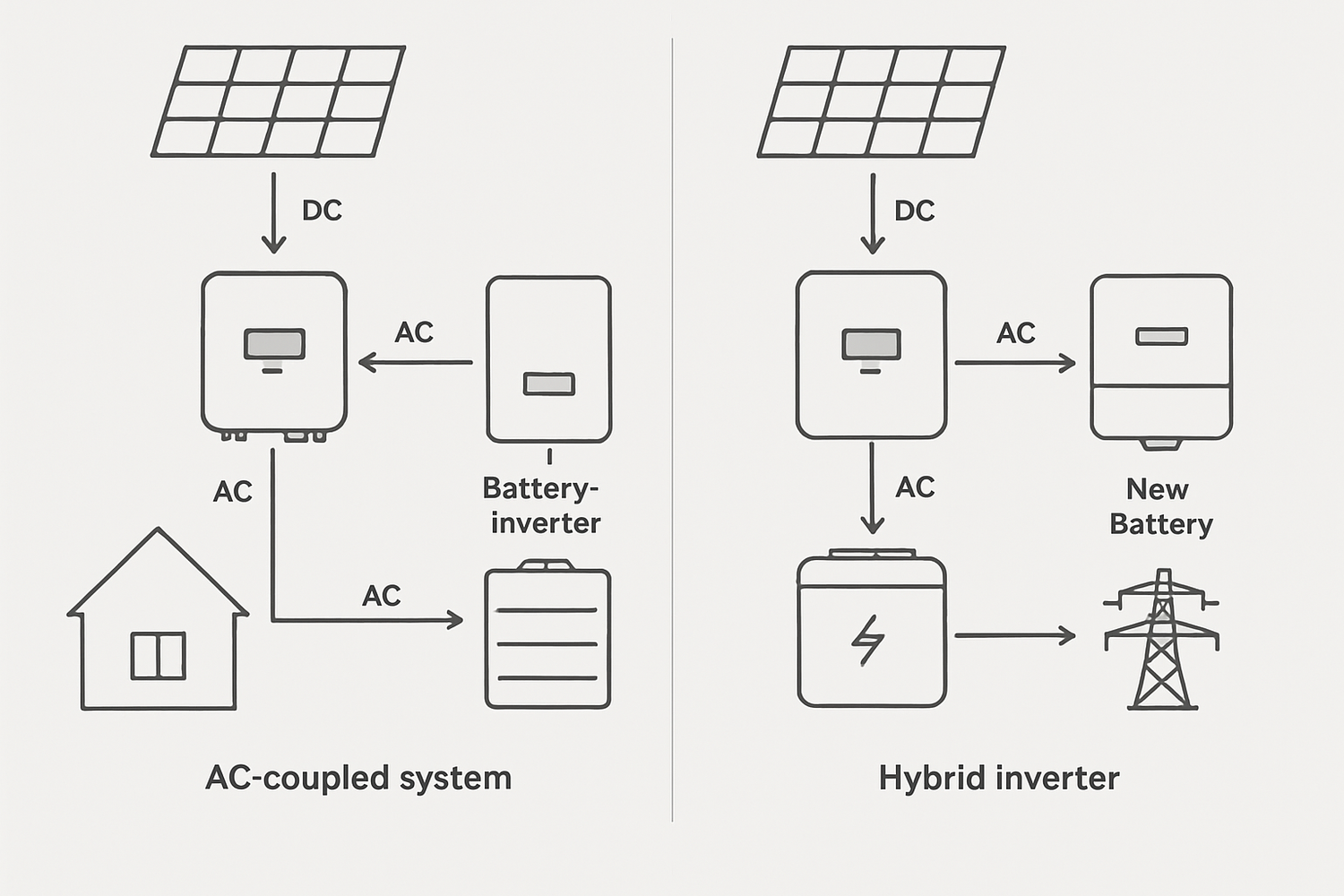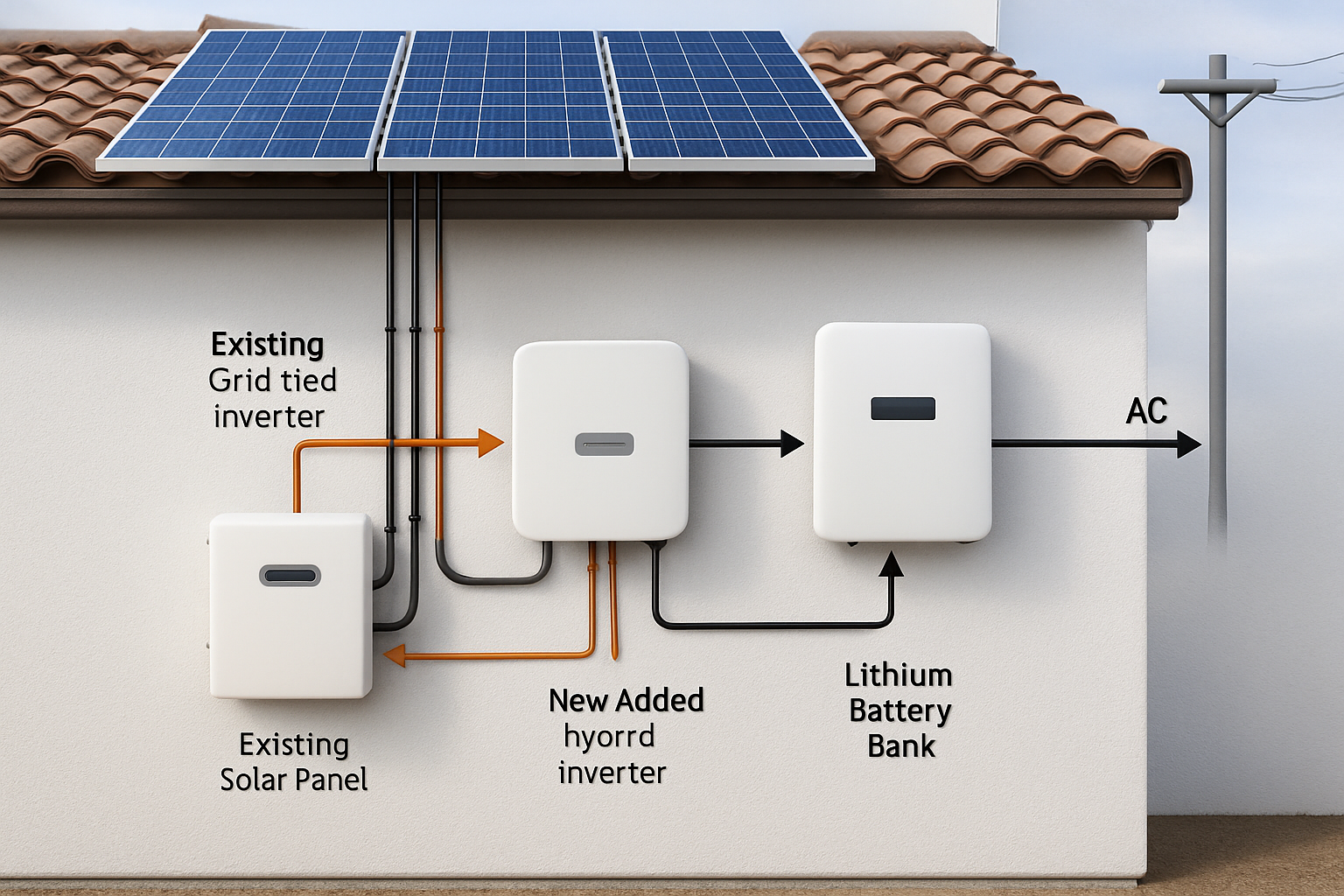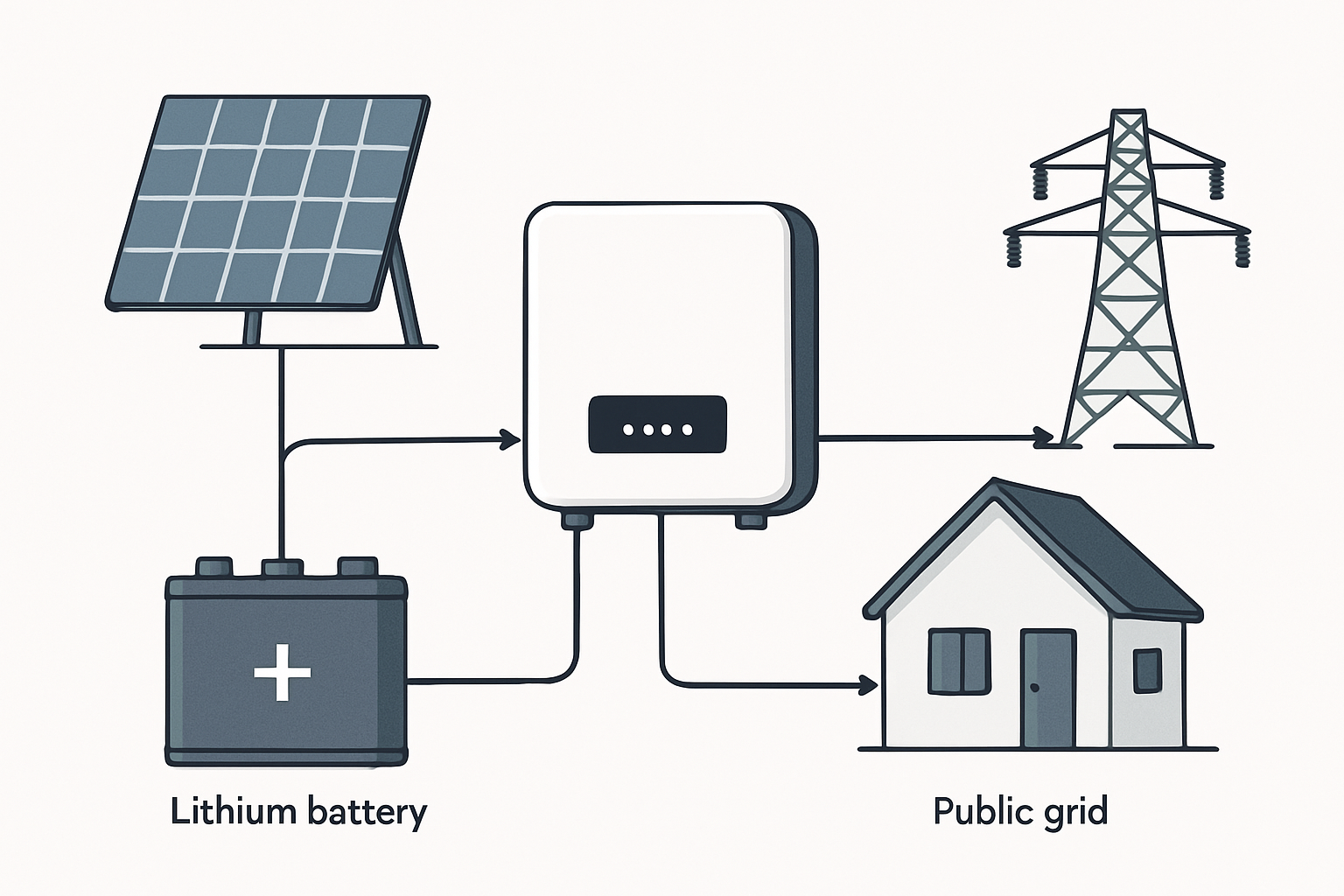If you already have a solar panel system, you're familiar with the benefits of generating your own electricity. Many early adopters of solar have what is known as an AC-coupled system, where solar panels connect to an inverter that directly feeds power into the home's electrical panel. Now, with the growing interest in energy resilience and cost savings, many are looking to add battery storage. This raises a critical question: what is the best way to integrate a battery into an existing AC-coupled setup? While adding a separate battery inverter is one path, replacing your current solar inverter with a modern hybrid inverter presents a compelling, albeit more involved, alternative.
Understanding Your Current AC-Coupled Setup
The Anatomy of a Standard AC-Coupled System
In a typical AC-coupled solar installation, the direct current (DC) produced by your solar panels is immediately converted to alternating current (AC) by a solar inverter (or microinverters). This AC power is then used by your home's appliances, with any excess sent back to the grid. The primary advantage of this configuration has always been its simplicity and cost-effectiveness for solar-only installations.
Why Add Battery Storage?
Adding a battery to your system unlocks new capabilities. It allows you to store the excess solar energy you generate during the day for use at night or during cloudy periods. This enhances your energy independence, provides reliable backup power during grid outages, and can help you avoid expensive electricity rates during peak demand hours. According to the U.S. Department of Energy, energy storage is a key component for ensuring a stable and resilient power supply as solar adoption grows.
The Role of a Hybrid Inverter in an Energy Storage Upgrade
What is a Hybrid Inverter?
A hybrid inverter is an all-in-one device that combines the functions of a solar inverter and a battery inverter. It intelligently manages the flow of energy between your solar panels, batteries, home, and the electrical grid from a single point of control. This integration simplifies the overall system architecture and can improve performance.
The Conventional Approach: Adding a Battery Inverter
The most straightforward way to add storage to an AC-coupled system is to install a separate battery inverter alongside your existing solar inverter. This new inverter will manage the battery, charging it with excess AC power from your solar system and discharging it when needed. This method is often called 'AC-coupling a battery' and is popular for its compatibility with virtually any existing solar installation.
The Hybrid Inverter Approach: A System Overhaul
Opting for a hybrid inverter in an existing system is a different strategy. It typically involves completely removing your original solar inverter and replacing it with the new hybrid unit. This fundamentally changes your system's design from a purely AC-coupled architecture to a more integrated DC-coupled or hybrid configuration for the battery. This path is more of a system overhaul than a simple addition.
Evaluating the Suitability: Hybrid Inverter vs. Additional AC Inverter
The decision between these two approaches depends on your priorities, including performance, cost, and long-term goals.
Performance and Efficiency Considerations
Efficiency is a major factor. When you AC-couple a battery, the solar energy goes through multiple conversions: DC from the panels is converted to AC by the solar inverter, and then this AC power is converted back to DC by the battery inverter to charge the battery. Each conversion incurs energy losses. A hybrid inverter, however, can charge the battery directly from the solar panels' DC output, which is a more efficient process with fewer conversion steps. Understanding the key performance indicators of a storage system is vital. As detailed in the ultimate reference on solar storage performance, metrics like round-trip efficiency directly impact your financial returns.
Cost and Installation Complexity
Adding a separate battery inverter is generally less expensive upfront and involves a less disruptive installation. Replacing your main solar inverter with a hybrid model requires more labor and a higher initial hardware cost. However, the long-term savings from higher efficiency and potentially selling your old inverter could offset this initial investment.
System Simplification and Future-Proofing
A single hybrid inverter creates a streamlined system that is easier to monitor and manage through one interface. Furthermore, modern hybrid inverters are equipped with advanced capabilities that prepare your home for the future of energy. As noted in reports from the International Renewable Energy Agency (IRENA), smart inverters are essential for enabling a more flexible and resilient grid. These features can allow participation in grid services or virtual power plants (VPPs), creating potential new revenue streams.
| Feature | Adding a Battery Inverter (AC Coupling) | Replacing with a Hybrid Inverter |
|---|---|---|
| Initial Cost | Lower hardware cost | Higher hardware cost |
| Installation | Simpler, less disruptive to existing setup | More complex, involves replacing a core component |
| Efficiency | More conversion steps (DC-AC-DC), potentially lower efficiency | Higher efficiency for PV-to-battery charging (DC-DC) |
| System Control | Two separate systems to monitor | Centralized control and monitoring from one device |
| Compatibility | High compatibility with any existing solar inverter | Requires compatibility check between PV array and new inverter |
| Future-Proofing | Limited by features of two separate inverters | Access to modern features like VPP and grid-forming capabilities |
Key Steps for Integrating a Hybrid Inverter
If you decide the hybrid inverter route is best, careful planning is essential.
Assessing Your Existing Solar Array
The most critical step is to ensure your existing solar panels are electrically compatible with the new hybrid inverter. The voltage and current specifications of your solar array must fall within the operating range of the inverter. A professional installer must perform this assessment to avoid system damage or underperformance.
Choosing the Right Hybrid Inverter and Battery
Selecting the right components is crucial. The hybrid inverter should be sized to handle your home's electrical loads and match the output of your solar array. It must also be compatible with your chosen battery chemistry. High-performance, long-lasting batteries such as Lithium Iron Phosphate (LiFePO4) are often recommended for their safety and reliability in residential energy storage systems.
The Installation Process Overview
The upgrade involves decommissioning and removing your old solar inverter, physically installing the new hybrid unit, and carefully wiring the solar panels, battery, and home electrical panel to it. This process should only be performed by a certified and experienced professional to ensure safety and compliance with electrical codes.
Disclaimer: This information is for educational purposes only and does not constitute professional installation or financial advice. Always consult with a qualified solar installer and a financial advisor to evaluate your specific situation.
A Smarter, More Integrated Energy Future
Choosing to replace your existing solar inverter with a hybrid inverter is a significant upgrade that transforms your system into a highly efficient, integrated energy hub. While adding a separate battery inverter is a simpler, lower-cost entry into energy storage, the hybrid inverter approach offers superior performance and prepares your home for the next generation of smart grid technology. The International Energy Agency (IEA) forecasts that solar PV will dominate the growth of renewable energy, making efficient and smart system integration more important than ever. Ultimately, the right choice depends on your budget, long-term energy goals, and desire for a fully optimized system.
Frequently Asked Questions
Can any hybrid inverter be used with my existing solar panels?
Not necessarily. The hybrid inverter's electrical specifications, particularly its DC input voltage and current limits, must be compatible with the output of your solar panel array. An installer must verify this compatibility before proceeding with an upgrade to prevent equipment damage and ensure optimal performance.
Will I lose power generation during the upgrade?
Yes, a planned system shutdown is required. The process involves disconnecting your old inverter and wiring in the new one, during which your solar system will not be operational. This typically takes a professional installer several hours to a full day, depending on the complexity of the installation.
Is it more cost-effective to replace my inverter or just add a battery inverter?
Adding a battery inverter usually has a lower upfront cost. However, replacing your unit with a hybrid inverter can provide better long-term value through higher round-trip efficiency, simplified management, and access to advanced features that may offer future financial benefits. A detailed analysis of your energy usage and goals is needed to determine the most cost-effective solution over the system's lifetime.
What happens to my old solar inverter?
If your old solar inverter is still functional, it may have some resale value on the secondary market. Otherwise, it should be disposed of as electronic waste according to local regulations. Your installation company can typically provide guidance on the best way to handle the old unit.





Leave a comment
All comments are moderated before being published.
This site is protected by hCaptcha and the hCaptcha Privacy Policy and Terms of Service apply.